#indian cucumber-root
Explore tagged Tumblr posts
Text














I snuck in a late spring hike in Cheat River Canyon yesterday, before the dreaded heat dome builds in early next week. Between Brazil's Pantanal going up in flames and the massive heat spikes in North America and elsewhere, I wonder what will be left of this planet's beautiful wild places in twenty to thirty years. For now, I celebrate and cherish every day the glorious diversity of living things that nature has gifted us. This includes the magnificent poke milkweed (Asclepias exaltata), a shade tolerant member of the dogbane family, which feeds and hosts a great many of those living things, such as the extraordinary Himmelman's plume moth (Geina tenuidactylus). Or the comical-looking rock harlequin (Corydalis sempervirens), which clings to the rocky outcrops of the canyon. And the exquisite downy skullcap (Scutellaria incana), a gregarious summer mint that associates with wild bergamot and tall thimbleweed at forest edges. And how about the peculiar dangling flowers of Indian cucumber (Medeola virginiana) or the pale, ghostly stems and bracts of the parasitic Indian pipe (Monotropa uniflora), just now emerging from the forest floor? In a couple of weeks, the rhododendron bloom will start in the canyon and summer will be in full swing.
#appalachia#vandalia#west virginia#wildflowers#flora#spring#cheat river canyon#cheat view#cheat river#snake hill wildlife management area#poke milkweed#bumblebee#insects#himmelman's plume moth#daisy fleabane#rock harlequin#downy skullcap#hoary skullcap#indian cucumber#indian cucumber-root#indian pipe#ghost plant#black-eyed susan
96 notes
·
View notes
Text

Ohio Spring Wildflower Field Guide
#flower#flowers#spring flowers#spring#floral#wildflowers#wild flowers#ohio#ohio wild flowers#botany#may#indian cucumber-root#Medeola virginiana#cucumber root#indian cucumber
1 note
·
View note
Text

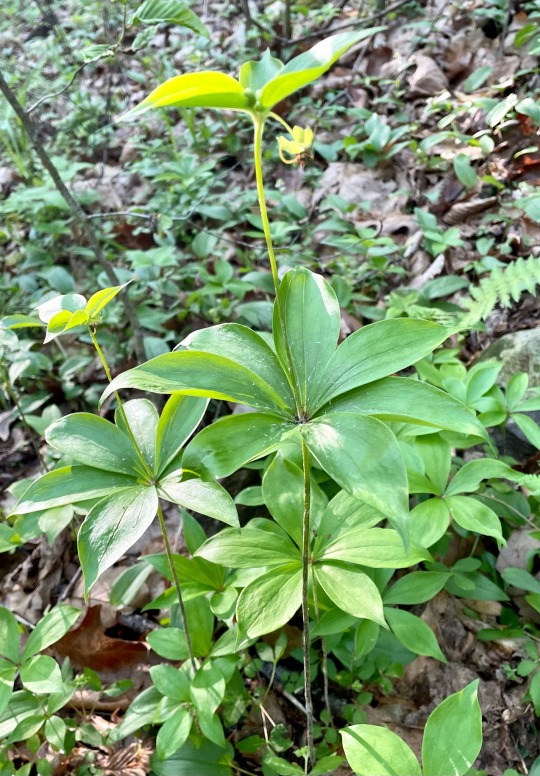
Indian cucumber root, Medeola virginiana. Pictures from the other day near the lake. For me these are an indicator of a good, less disturbed area of woodland.
#pennsylvania#plants#plantblr#indian cucumber root#medeola virginiana#may#springtime#woodland wildflowers#native plants
188 notes
·
View notes
Text

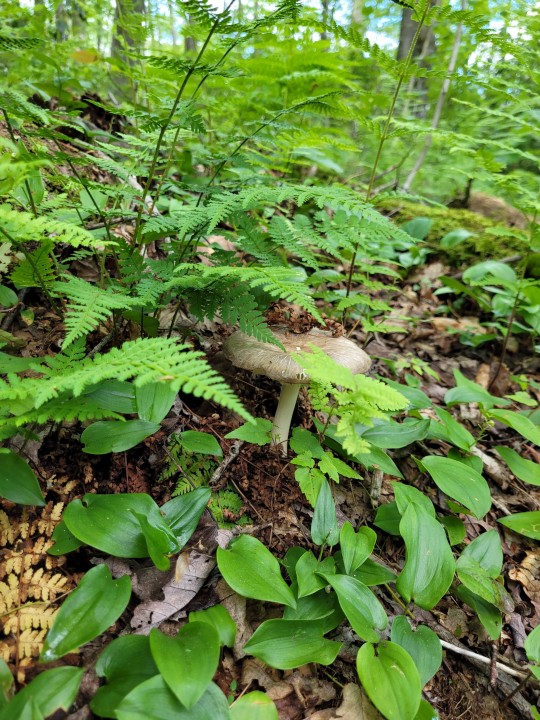



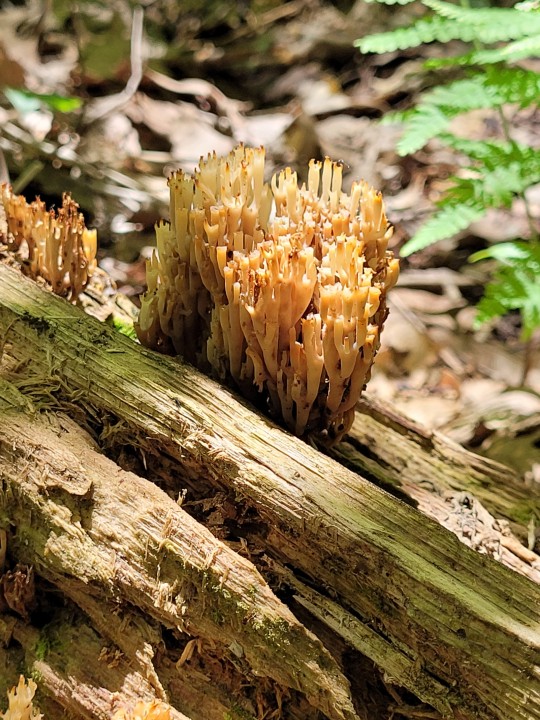

Was finally able to get myself out into the forest last week, after a difficult month. I'm sad to have missed the May ephemerals, but was glad to catch the mountain laurel blooming. These are from June 9th, and the laurels seemed to be at their peak.
Life continues to get in the way of my favorite hobby; I desperately need to learn to drive if I want to hike without relying on someone else's schedule.
#sooo much canada mayflower and sessile bellwort and indian cucumber root. mostly done flowering already#mountain laurel#hiking#native plants#wildflowers#laurel highlands#laurel ridge#mine
3 notes
·
View notes
Text
Recipes for Water Based Kintypes
These are recipes I enjoy that make me feel more otter or things that I think would! This is pretty anthromorphic since I am eating human food, but I hope this is still helpful!
Not taking requests for other types of therians/kintypes since this was a lot of work, so sorry!

Shellfish - Including Cephalopods
Clam Fritters
Grilled Cockles
Clam Chowder
Baked Scallop Shells
Cajun Seafood Boil
Garlic Butter Razor Clams
Bouillabaisse
Spanish Paella
Crawfish Linguine
Shrimp Ceviche
Spicy Stir Fried Squid
Ikayaki (Japanese Grilled Squid)
Squid Ink Pasta With Shrimp
Jellyfish Salad (Putting This Here)
Salt and Pepper Cuttlefish
Raw Oysters on the Half Shell
New England Fried Clams
Maryland Crab Cakes
Lobster Thermidor
Yangnymeon Gejang (Spicy Raw Crab)
Sailor Style Mussels
Seafood Okra
Shrimp Platter
Finned Fish
Cioppino
African Fish Stew
Trout With Garlic Lemon Butter Sauce
Miso Glazed Salmon
Unagi Don (Grilled Eel Rice Bowl)
Oden (Japanese Fish Cake Stew)
Foil Pack Halibut
Tuna Onigiri
Sardine Pasta
Authentic Anchovy Caesar Salad Dressing
Mediterranean Style Fish Soup
Salmon Ochazuke (Tea Rice)
Fish Tacos
Garlic Butter Baked Tilapia
Pan-Seared Halbut with Caper Sauce
Crispy Pan Fried Tilapia
Herring and Pumpkin Pot Pie
Creamy Fish Chowder
Potato Pancakes with Smoked Salmon, Caviar and Dill Cream
Pan Seared Tilapia
Clay Pot Fish and Tofu
Indian Fish Masala
Spicy Green Masala Fish Fry
Spicy Salmon Crudo
Oven Fried Catfish
Lemon Butter Pan Seared Trout
Non-Fish Meat
Fried Frog Legs
Rabbit Cacciatore
Chicken Chasseure
Escargot (Snails)
Human Safe Kibble Recipe
Chicken and Dumplings
Wood Roasted Whole Duck
Peking Duck
Honey, Soy, and Ginger Duck
Doro Wot (Ethiopian Chicken and Egg Stew)
Cantonese Soy Sauce Whole Chicken
Chinese Chicken and Mushroom Soup
Scotch Eggs
Vegetarian, Vegan, and Plant-Based
Wakame (Seaweed Salad)
Tofu "Salmon" (Consider using rice paper and seaweed as "skin")
Beer Battered Vegan Fried "Fish"
Sweet and Sour Vegan "Fish"
Braised Lotus Roots
Korean Marinated Eggs
Caramelized Garlic-Chili Lotus Stems With Mung Bean Noodles
Sauteed Baby Bok Choy (Saw some otters IRL eating these raw)
15-Minute Zucchini, Pea, and Watercress Minestrone
Vegan "Fish" Pie
Vegan "Fish" Sauce
Vegan "Eel"
Vegan Takoyaki (Octopus Balls)
Nori Wraps
Bean Curd Sticks
Vegan "Tuna" Salad
Watercress Soup
Tofu Pot Pie
Seaweed and Tofu Fritters
Vegan Garlic Butter "Scallops"
Oyster Mushroom Skewers
Seaweed Miso Soup
Cold Noodles in Icy Broth
Marinated Bean Curd with Kelp
Miso Garlic King Oyster Mushrooms
Old Bay Potatoes
Egg Fried Rice
Chewy Potato Noodles
Desserts
Hot Buttered Apple
Melon Ice Cream Soda Float
Frozen Fruit Shaved Ice
Lemon Snow Pudding
Summer Fruit Salad
Blue Jello Cloud Mousse
Kelp Nougat Crunch
Frozen Whipped Jello
Taiyaki (Fish Shaped Sweet)
Soda Float
Cloud Coconut Jelly
Haupia (Coconut Milk Squares)
Raindrop "Cake"
Any Shaved Ice
Lemon Posset
Fruit Filled Spring Rolls
Drinks
It stopped letting me attach links so names only here.
Clamato Juice
Alcoholic: Micheladas
Wheatgrass Juice
Cucumber, Lemon, Mint, and Ginger Water
Coconut Milk Brazilian Limeade
Ocean Water Punch
Alcoholic: Seafood Bloody Mary
Watercress and Honey Tea
Kombu/Kelp Tea
Shellfish Broth
Blue Raspberry Iced Lemonade
Hwachae (Korean Watermelon/Fruit Punch)
Agua de Pepino (Cucumber Agua Fresca)
Fish Bowl Punch
#therian#otherkin#otter therian#otterkin#therian recipes#Kin recipes#therian food#kin food#mermaidkin#oceankin#whale therian#seal therian#selkiekin#capybarakin
103 notes
·
View notes
Text
Tulsi Infused Water: A Refreshing and Healthy Drink for Summer

As summer sets in with its blazing heat and long days, staying hydrated becomes not just a matter of comfort, but of health and wellness. While water is the most essential source of hydration, infusing it with herbs such as Tulsi (Holy Basil) can significantly enhance both its flavor and nutritional value. “ Tulsi-infused water ” is an easy, natural way to enjoy a refreshing drink while reaping numerous health benefits. Rooted in ancient Ayurvedic wisdom, this simple infusion is the perfect summer companion.
What is Tulsi ?
Tulsi (“Ocimum sanctum” or “Ocimum tenuiflorum”), commonly known as Holy Basil, is a sacred plant in Indian culture and a cornerstone of Ayurvedic medicine. Often referred to as the “Queen of Herbs,” Tulsi is recognized for its adaptogenic, antimicrobial, anti-inflammatory, and antioxidant properties. It comes in various types—“Rama Tulsi” (green leaves), “Krishna Tulsi” (purple leaves), and “Vana Tulsi” (wild forest variety)—each offering unique flavors and therapeutic effects.
Traditionally grown in Indian households, Tulsi holds spiritual and medicinal significance. It has been used for centuries to treat respiratory issues, skin conditions, stress, digestive problems, and more. When infused in water, Tulsi becomes a gentle and effective wellness drink suitable for daily consumption, particularly during the hot and dehydrating summer months.
Health Benefits of Tulsi-Infused Water
1. Natural Detoxifier
Tulsi helps flush out toxins from the body by supporting liver and kidney function. It aids digestion and improves metabolic activity, making Tulsi-infused water a natural detox drink. This is particularly beneficial in summer, when the body tends to retain heat and feel sluggish.
2. Strengthens Immunity
Tulsi is rich in antioxidants like eugenol and other bioactive compounds that help boost immunity. Its antimicrobial properties protect against common infections, making it a preventive remedy during seasonal transitions and extreme weather.
3. Improves Digestion and Gut Health
The infusion helps soothe the stomach, reduce bloating, and support gut health. For those prone to indigestion or acidity due to summer heat or dietary shifts, Tulsi water acts as a natural remedy.
4. Supports Mental Clarity and Reduces Stress
As an adaptogen, Tulsi helps balance cortisol levels—the hormone responsible for stress. Regular intake promotes mental clarity, focus, and emotional balance, offering a natural way to deal with daily stressors without caffeine or stimulants.
5. Enhances Skin Health
Hydration is key to glowing skin, and Tulsi takes it a step further with its purifying properties. It helps clear up acne, reduces inflammation, and contributes to radiant skin by promoting blood purification.
6. Balances Blood Sugar
Preliminary studies suggest that Tulsi may help regulate blood sugar levels and improve insulin sensitivity, making it a smart addition to a health-conscious lifestyle.
How to Prepare Tulsi-Infused Water
Ingredients:
10–12 fresh Tulsi leaves (or 1 teaspoon dried Tulsi)
1 liter of filtered water
Optional: lemon slices, mint leaves, cucumber, or ginger for flavor variation
Preparation:
1. Wash the Tulsi leaves thoroughly.
2. Gently crush the leaves to release their essential oils.
3. Add the leaves to a jug or bottle of water.
4. Allow the mixture to steep for 2–3 hours at room temperature or refrigerate overnight for a stronger infusion.
5. Strain if desired, and serve chilled.
For a summer-friendly twist, add cooling ingredients like cucumber or mint. A squeeze of lemon can enhance flavor and increase vitamin C content.
When and How Much to Drink
Tulsi-infused water is safe for daily use when consumed in moderation. Two to three glasses a day can provide consistent health benefits without overloading the system. Start your day with a glass on an empty stomach for detox benefits, and continue sipping throughout the day to stay cool and refreshed.
Note: While Tulsi is generally safe, individuals who are pregnant, breastfeeding, or on medications—particularly blood thinners or diabetes medications—should consult a healthcare professional before regular use.
A Sustainable and Wholesome Choice
One of the best aspects of Tulsi-infused water is its sustainability. Tulsi is easy to grow in a home garden or even in a small pot, making it an accessible wellness option. Cultivating and using fresh herbs like Tulsi supports natural living and reduces reliance on sugar-laden or artificially flavored beverages.
In addition to its physical benefits, the ritual of preparing and drinking Tulsi water can also offer a moment of mindfulness and connection to nature—a welcome pause in today’s fast-paced life.
Conclusion
In a season when hydration is critical and the body craves natural cooling, Tulsi-infused water stands out as a smart, simple, and soothing choice. Combining centuries of Ayurvedic wisdom with modern wellness needs, it offers a host of health benefits in a glass that’s as refreshing as it is healing.
Whether you’re at home, in the office, or on the move, making Tulsi-infused water a part of your daily routine can help you stay hydrated, healthy, and energized all summer long.
#health drinks#tulsi#medicine#nutrition#home#tulsi plant#summer drinks#summer season#healthcare#gardening#medicine and health
2 notes
·
View notes
Text
Easy Veg Biryani at Home with Step-by-Step Guide | Omichef

Ever craved the rich aroma of biryani without stepping out of your kitchen? Making veg biryani at home is more than just preparing a meal — it’s a comforting experience filled with the crackle of spices, colorful veggies, and the soothing scent of basmati rice. For homemakers and food lovers, it’s one of those dishes that brings everyone to the table with a smile.
The Story Behind Biryani
Did you know biryani has deep roots in Indian history? While many believe it came from Persia, ancient texts tell a different story. Biryani is said to have originated in Southern India, particularly in Tamil Nadu and Karnataka, where it was known as Suro ya Masodan. Back then, it was a royal dish slow-cooked in clay pots with rich spices and meat.
As time passed, vegetarian communities found their own way to enjoy this classic. With a few creative swaps, veg biryani became just as flavorful and loved. Today, it’s a go-to dish for festivals, family dinners, or simply when you want something special without the meat.
Why Veg Biryani at Home Works So Well
Cooking veg biryani at home allows you to control flavors, ingredients, and spice levels. It’s hearty, colorful, and packed with nutrition. Plus, you get to enjoy that irresistible aroma right from your kitchen.
Ingredients That Make It Perfect
Here’s what you will need and why:
Basmati Rice — Gives the dish that light, fluffy texture.
Mixed Veggies — Carrots, beans, peas, potatoes — all add their own charm.
Onions — Fried onions bring sweetness and depth.
Tomatoes — For a hint of tang.
Ginger-Garlic Paste — Adds bold flavor.
Mint & Coriander — Fresh and aromatic.
Whole & Ground Spices — Like cardamom, cumin, bay leaf, and biryani masala.
Curd — Creamy and balances the spices.
Ghee or Oil — For richness.
Saffron Milk (optional) — Adds that royal touch.
Kitchen Tools You will Need
A heavy-bottomed pot or casserole
Mixing bowl for marination
Strainer for rice
Spatula for layering
Step-by-Step Veg Biryani at Home
Step 1: Prep the Rice Soak 1.5 cups of basmati rice for 30 minutes. Boil in salted water with bay leaf and cardamom. Cook until 90% done and drain.
Step 2: Cook the Vegetables Sauté sliced onions in ghee or oil until golden. Add ginger-garlic paste, tomatoes, and cook till soft. Mix in chopped veggies, curd, spices, and salt. Cook until veggies are tender.
Step 3: Layering Take out half of the veggie mixture. Layer half the rice over the remaining veggies. Sprinkle mint, coriander, saffron milk, and fried onions. Repeat with remaining veggies and rice.
Step 4: Dum Cooking Cover tightly and cook on a low flame for 15–20 minutes. Let it rest for 10 minutes before serving.
Serving Tip
Serve your veg biryani hot with a side of cool raita or cucumber salad. It’s best enjoyed fresh and shared with family.
Final Thoughts
Making veg biryani at home is like bringing a piece of heritage into your kitchen. From its ancient roots to modern adaptations, it remains a dish that connects taste, tradition, and togetherness in every bite.
The Original Blog is Here : Easy Veg Biryani at Home with Step-by-Step Guide | Omichef.
#omichef#india 2025#omichef cookware#triply cookware#Veg Biryani at Home#Triply Casserole#healthy eating
0 notes
Text
Wise Acres Organic Farm
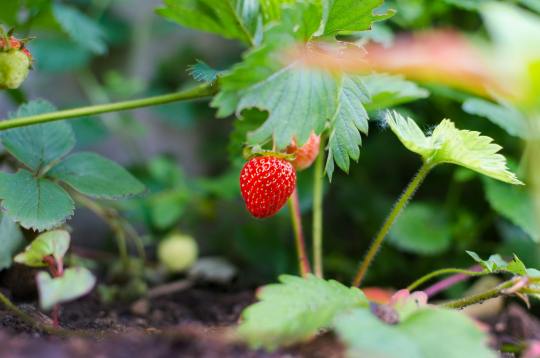
Exploring Wise Acres Organic Farm: A Sustainable Gem in Indian Trail, NC
Nestled in the heart of Indian Trail, North Carolina, Wise Acres Organic Farm stands as a beacon of sustainable agriculture, offering a refreshing and green experience to both locals and visitors. This farm isn't just about growing organic produce; it’s about cultivating a lifestyle rooted in environmental responsibility, community connection, and healthy living. From its rich history to its wide range of offerings, Wise Acres has become a cornerstone in the organic farming movement of the region.
The Story Behind Wise Acres Organic Farm
Wise Acres Organic Farm began with a simple yet profound mission: to provide fresh, locally grown produce while promoting sustainable farming practices. The farm's founders were driven by a desire to return to the roots of agriculture — growing food in a way that respects nature’s cycles, promotes biodiversity, and supports the local economy.
Over the years, the farm has evolved, becoming a staple for individuals and families who value transparency in food sourcing and the health benefits that come from organic farming. What started as a modest operation has blossomed into a thriving farm that serves the local community in Indian Trail and beyond.
Sustainable Farming Practices at Wise Acres
At the core of Wise Acres’ operations is their commitment to sustainable farming. Unlike conventional farming, which often relies heavily on synthetic chemicals and fertilizers, Wise Acres employs natural methods that enrich the soil and ensure the health of the land for future generations. This includes crop rotation, composting, and utilizing organic pest control techniques.
By avoiding harmful pesticides and herbicides, Wise Acres is able to produce food that is not only healthier for consumers but also better for the environment. The farm’s dedication to sustainability is evident in every corner of the property, from the vibrant vegetable patches to the thriving pollinator habitats that surround them.
Organic Produce: Fresh, Flavorful, and Nutritious
Wise Acres is renowned for its wide variety of organic produce, all grown without the use of synthetic fertilizers or pesticides. The farm’s produce is known for being fresh, flavorful, and nutrient-rich — qualities that many shoppers are willing to pay a premium for. Whether you're looking for leafy greens like kale and spinach, root vegetables like carrots and beets, or summer favorites like tomatoes and cucumbers, Wise Acres has something for every taste.
The farm’s crop offerings vary seasonally, ensuring that customers get the best of what the land has to offer throughout the year. This seasonal variety not only supports a healthy diet but also encourages individuals to eat more in-tune with nature's cycles, which can often lead to better digestion and overall health.
The Farm-to-Table Experience
One of the highlights of visiting Wise Acres Organic Farm is the farm-to-table experience it offers. The farm is deeply committed to ensuring that the food grown there stays local, cutting down on the carbon footprint associated with long-distance food transportation. By selling directly to consumers, whether through a CSA (Community Supported Agriculture) program, local farmers’ markets, or partnerships with local restaurants, Wise Acres ensures that fresh, organic food is readily accessible to the community.
For residents of Indian Trail, NC, and surrounding areas, shopping at Wise Acres means you’re not just getting fresh produce but supporting an ethical and environmentally conscious business. The farm’s CSA program is a great option for those looking to enjoy regular deliveries of organic produce straight to their doorsteps, creating a direct connection between the farmer and the consumer.
Educational Programs and Community Engagement
Wise Acres Organic Farm isn’t just about providing fresh food; it’s about fostering a community-focused agricultural culture. The farm regularly hosts educational events and workshops designed to teach both children and adults about sustainable farming practices, the importance of organic agriculture, and how to grow your own food at home.
For young families, this is a great opportunity to introduce children to where their food comes from and how it’s grown. Many of the farm’s workshops include hands-on activities such as planting seeds, harvesting crops, and learning about the role of insects in maintaining healthy ecosystems.
In addition to educational programs, the farm has also become a gathering place for the community. Visitors often come for the seasonal farm tours or to shop at the on-site farm stand. These interactions allow locals to connect, share stories, and learn more about the benefits of organic farming.
The Benefits of Organic Farming at Wise Acres
There are countless benefits to supporting organic farming, and Wise Acres provides an excellent example of how these practices can positively impact both the environment and personal well-being. Some of the key advantages include:
Healthier Food: Organic farming avoids the use of harmful chemicals and fertilizers, resulting in produce that is free from pesticide residues. This means healthier food for you and your family.
Environmental Impact: Organic farming practices help preserve soil health, reduce water pollution, and support biodiversity. By avoiding synthetic chemicals, Wise Acres is able to contribute positively to the environment and help maintain a balanced ecosystem.
Support for Local Economy: By purchasing directly from Wise Acres, consumers are supporting a local business that reinvests profits into the community. This strengthens the local economy and reduces dependence on larger, industrialized agricultural operations.
Better Taste and Quality: Many people find that organic produce from farms like Wise Acres has better taste and texture compared to conventionally grown counterparts. The natural growing methods help preserve the flavors and nutrients in the food, providing a more satisfying culinary experience.
Visiting Wise Acres Organic Farm: What to Expect
For those who want to get up close and personal with the farm, a visit to Wise Acres is a must. Whether you’re strolling through the rows of vibrant vegetables, interacting with farm animals, or picking out fresh herbs at the farm stand, there’s always something to see and do.
The farm offers seasonal events like harvest celebrations, where visitors can participate in activities like pumpkin picking, apple cider pressing, and more. These events provide a fun, family-friendly experience while promoting the values of sustainable farming.
Supporting Local Agriculture: Why It Matters
In an age where mass-produced food dominates the market, farms like Wise Acres Organic Farm play a crucial role in promoting local, ethical agriculture. By supporting Wise Acres, you are not only getting access to high-quality organic produce but also contributing to the preservation of local farmland. Small farms like this are essential in keeping the agricultural landscape diverse and sustainable, especially as the pressures of urban sprawl continue to grow.
By choosing to shop at Wise Acres and participate in their community initiatives, you are helping to support a future where organic farming is a mainstay of local food systems. This support fosters an agricultural ecosystem that is not just good for the environment but good for everyone involved.
Conclusion
Wise Acres Organic Farm in Indian Trail, NC, is more than just a farm; it’s a place where community, sustainability, and quality food intersect. Whether you’re buying organic produce, participating in educational workshops, or simply enjoying a day out in the fresh air, Wise Acres provides a refreshing look at what it means to grow and consume food responsibly. For those looking to make healthier, more sustainable choices, Wise Acres offers a compelling example of how small-scale, organic farming can be a win-win for both people and the planet.
Help a local partner thrive by supporting their business.
4701 Hartis Rd, Indian Trail, NC 28079, United States
See what's next to visit.
0 notes
Text
Natural Skin Care Products in India: Your Guide to Clean, Effective Beauty
India, with its rich heritage of Ayurveda, herbal remedies, and plant-based wellness, is one of the most resourceful places for effective and affordable natural skin care products. As awareness grows around clean beauty and chemical-free formulations, more people are embracing natural skin care products in India to address concerns like acne, pigmentation, dryness, aging, and dullness—without relying on harsh synthetic ingredients.
In this guide, we explore the benefits of natural skincare, key ingredients used in Indian formulations, product types, and how to choose the best ones for your skin type.
Why Choose Natural Skin Care Products in India?
Rooted in Ayurveda and Tradition Indian skincare is deeply influenced by ancient Ayurvedic principles that use herbs, oils, and minerals to treat and nourish the skin.
Rich Botanical Diversity India is home to healing plants like neem, tulsi, turmeric, aloe vera, and sandalwood, which are renowned for their natural healing properties.
Gentle and Effective Natural products work with your skin, not against it. They are less likely to cause irritation, making them ideal for sensitive and acne-prone skin.
Eco-Friendly and Sustainable Many natural skincare formulations in India avoid animal testing, minimize plastic use, and support organic farming.
Local and Affordable Thanks to India’s homegrown supply of herbs and oils, natural skincare is more accessible and cost-effective compared to imported chemical-heavy brands.
Popular Natural Ingredients Used in Indian Skin Care
Each natural ingredient has unique properties. Here are some commonly used botanicals in natural skin care products in India:
Neem: Antibacterial, ideal for acne-prone skin
Tulsi (Holy Basil): Detoxifies and calms inflammation
Aloe Vera: Hydrates, soothes, and cools the skin
Turmeric (Haldi): Brightens and reduces pigmentation
Sandalwood (Chandan): Cools and improves complexion
Saffron (Kesar): Adds radiance and fades scars
Multani Mitti (Fuller’s Earth): Absorbs excess oil and deep cleans
Rose Water: Natural toner that refreshes and tightens pores
Coconut Oil: Moisturizes and repairs the skin barrier
Licorice Root: Fades dark spots and evens skin tone
Must-Have Natural Skin Care Products in India
Let’s break down the most essential product categories you can include in your natural skincare routine:
1. Natural Face Wash
Ideal for daily cleansing without stripping your skin’s natural moisture.
Best For: All skin types Ingredients to Look For: Neem, tulsi, honey, aloe vera, tea tree Benefits: Removes dirt, excess oil, and bacteria naturally
2. Herbal Toner or Mist
Toners help refresh the skin, shrink pores, and rebalance skin pH.
Best For: Oily, acne-prone, and sensitive skin Ingredients to Look For: Rose water, cucumber, green tea Benefits: Hydration, soothing, and preparing skin for serums or moisturizers
3. Natural Face Serum
Serums deliver concentrated active ingredients deep into the skin.
Best For: Pigmentation, aging, dullness Ingredients to Look For: Vitamin C (from amla or kakadu plum), saffron, licorice, hyaluronic acid (plant-derived), bakuchiol Benefits: Brightening, anti-aging, and hydration
4. Natural Moisturizer or Cream
Maintains hydration and strengthens the skin’s barrier.
Best For: Dry, normal, and combination skin Ingredients to Look For: Aloe vera, shea butter, almond oil, coconut oil Benefits: Softens skin and prevents moisture loss
5. Natural Face Mask or Ubtan
Ideal for deep cleansing, exfoliating, and reviving tired skin.
Best For: All skin types (especially oily and dull skin) Ingredients to Look For: Multani mitti, turmeric, sandalwood, rose petals, besan (gram flour) Benefits: Detoxifies, brightens, and refines pores
6. Natural Lip Balm
Keeps lips soft, smooth, and free from cracks.
Ingredients to Look For: Beeswax, cocoa butter, shea butter, rose oil Benefits: Nourishment and protection from dry or chapped lips
7. Natural Under Eye Cream
Gentle creams or gels made from herbs and oils that reduce puffiness and dark circles.
Ingredients to Look For: Caffeine, cucumber, almond oil, rosehip Benefits: Brightening, de-puffing, and moisturizing
8. Natural Sunscreen
Shields your skin from harmful UV rays with mineral-based protection.
Best For: All skin types, especially sensitive Ingredients to Look For: Zinc oxide, aloe vera, green tea Benefits: Non-toxic sun protection without synthetic chemicals
How to Choose Natural Skin Care Products in India
When shopping for natural skin care products, follow these tips to make informed choices:
Read the Ingredient List: Make sure key actives are listed at the top and avoid parabens, sulfates, mineral oil, and synthetic fragrance.
Look for Certifications: Organic, cruelty-free, or eco-certifications can be helpful indicators of authenticity.
Know Your Skin Type: Choose products tailored to your skin—oily, dry, sensitive, or combination.
Do a Patch Test: Even natural products can cause allergies. Test on a small area before full application.
Check for Expiry: Natural products may have a shorter shelf life due to minimal preservatives.
Sample Routine Using Natural Skin Care Products in India
Here’s a simple, effective AM/PM skincare routine with all-natural products:
Morning Routine
Cleanser with neem or aloe vera
Rose water toner
Vitamin C serum or saffron-infused facial oil
Lightweight aloe-based moisturizer
Natural sunscreen (SPF 30+)
Night Routine
Herbal face wash
Cucumber toner
Bakuchiol or rosehip oil serum
Rich cream with shea butter or almond oil
Under-eye cream with caffeine or rose extract
Final Thoughts
Natural skin care products in India offer a holistic, time-tested path to healthy and radiant skin. Whether you are looking to simplify your skincare or make more conscious choices, India's treasure trove of herbs, oils, and botanicals makes it easy to go natural without compromising results.
By focusing on plant-based, chemical-free formulations, you not only nourish your skin—but also support a cleaner, more sustainable lifestyle. Let your skincare be as pure as nature intended.
0 notes
Text



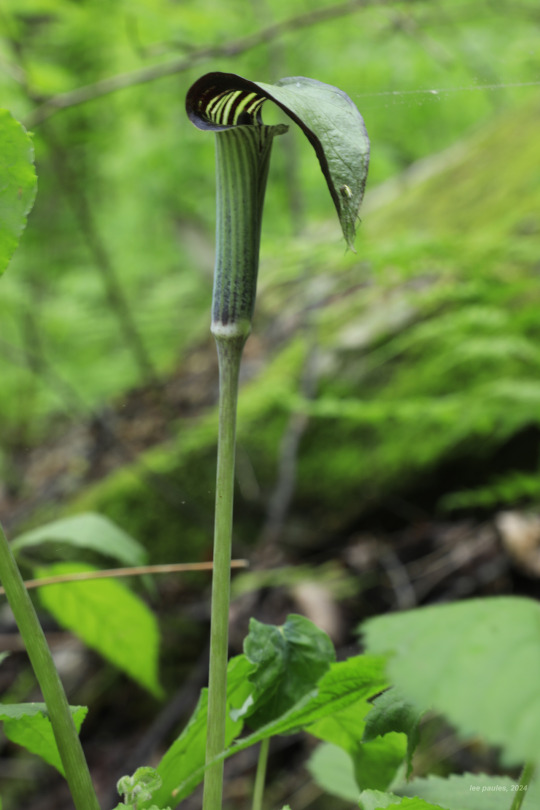

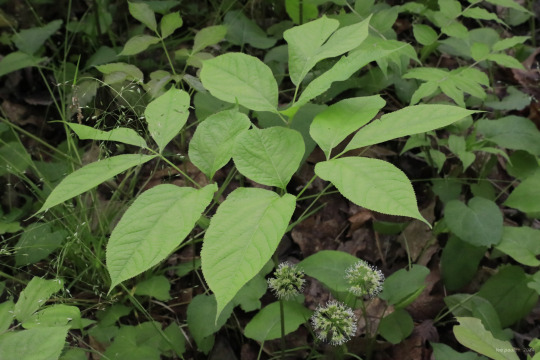
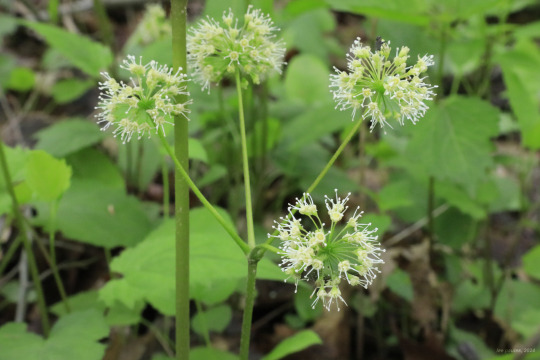
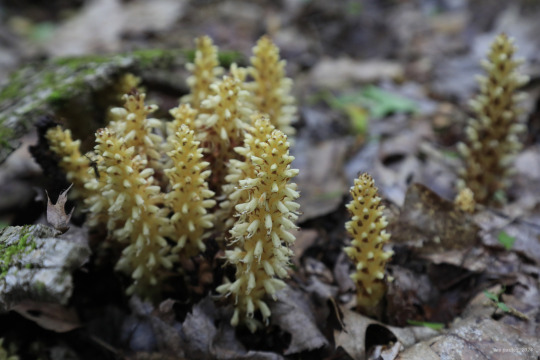

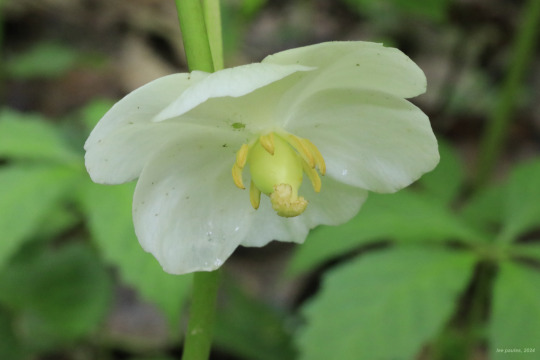
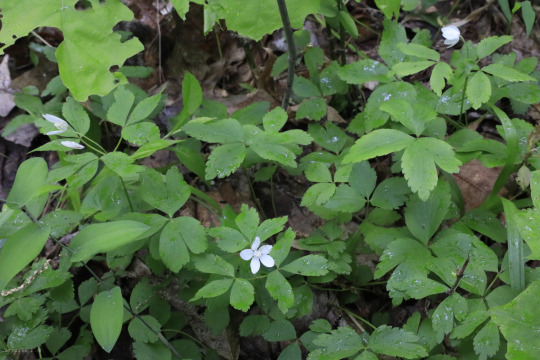
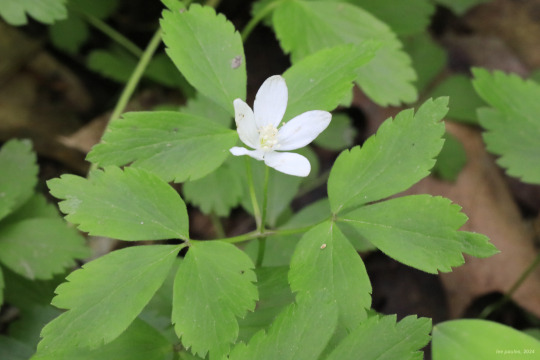
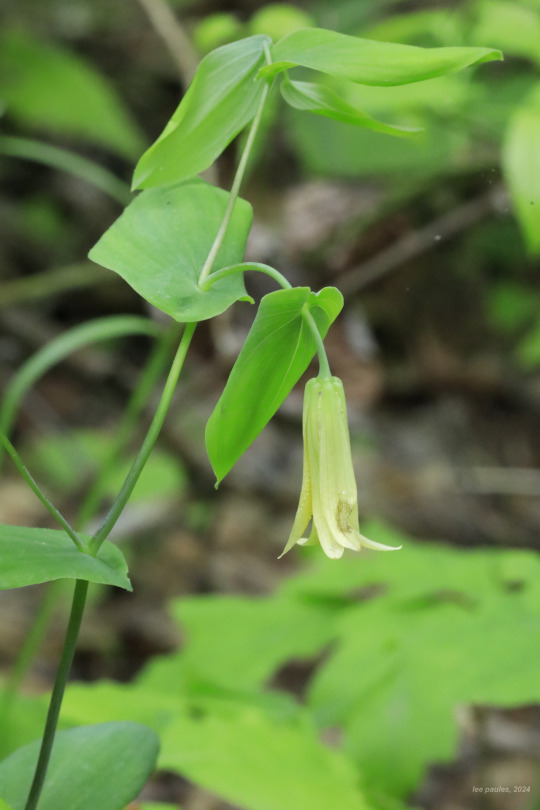
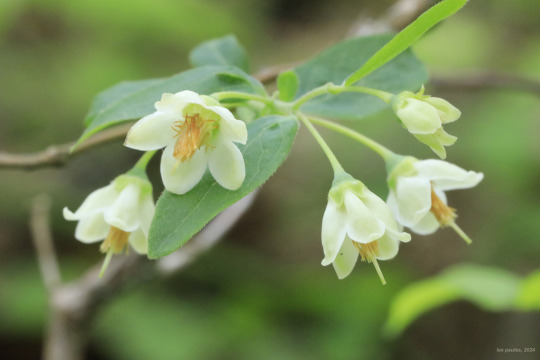




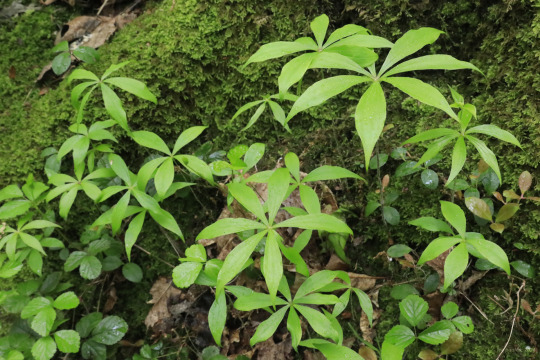
The awful weather continues in NC-WV, although thankfully not on the order of the destructive storms out west. I stayed close to home for my weekend hike, heading out to the touristy side of the Cheat River Canyon, including Raven Rock, a spectacular sandstone promontory overlooking the river. I thought I had it to myself, until a rabble of church youth singers marched in on Crocs to a caterwaul of bad turkey calls (I hope that's not their stage act). They unwittingly posed for one of my shots, adding a bit of perspective to one of the sheer sandstone cliffs that constitute Raven Rock (top photo). Second photo is the perspective from the edge of that same cliff. Storms came swooping in shortly after I made it back to the trailhead. The pink lady slippers are at peak bloom right now, along with the gorgeous deerberry, by far and away the most beautiful of the Vaccinium shrubs that grow in this area. And for those of you who search out the mountain laurel blooms in May, your time has nearly arrived. :-)
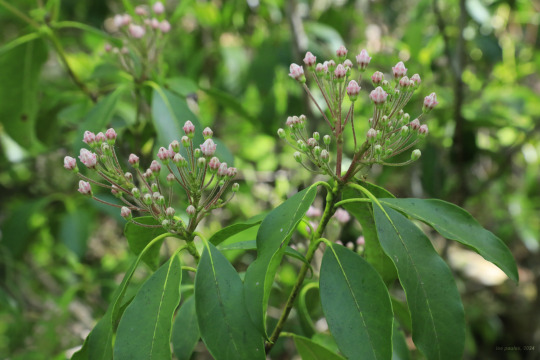
#appalachia#vandalia#west virginia#wildflowers#flora#spring#coopers rock state forest#cheat river canyon#raven rock#scott run#scott run trail#pink lady's slipper#jack-in-the-pulpit#wild sarsaparilla#cancer root#mayapple#wood anemone#perfoliate bellwort#deerberry#speckled wood lily#indian cucumber#indian cucumber-root#mountain laurel
57 notes
·
View notes
Text
Is There a Perfect Time of Year to Make Pickles?
Pickling is an age-old tradition celebrated in many cultures worldwide, but is there really a perfect season to make pickles? If you’re exploring the best homemade pickles online, understanding the ideal timing for pickling can help you get the freshest, most flavorful results.
🌿 Why Season Matters in Pickling
The quality of your pickle starts with the ingredients. Freshness plays a huge role in the final taste, texture, and shelf life of your homemade pickles. Certain fruits and vegetables are naturally seasonal, and harvesting them at peak ripeness ensures:
Crisp texture
Robust flavor
Maximum nutrient retention
For this reason, the best homemade pickles online often reflect the seasons—using ingredients picked when they’re freshest and most flavorful.
🍅 Ideal Seasons for Popular Pickle Ingredients
Summer: This is prime time for cucumbers, green mangoes, green chilies, and other vegetables commonly used in pickling. The warm weather also helps in natural fermentation and sun-curing processes.
Autumn: Apples, carrots, and beets harvested in fall make excellent pickling candidates. The cooler weather slows fermentation, giving pickles a milder, balanced flavor.
Winter: Root vegetables like turnips and radishes are winter favorites for pickling. Some Indian pickles, like lime or lemon varieties, are traditionally made during winter months for optimal shelf life.
☀️ Sunlight and Temperature: Key to Pickling Success
Many traditional pickles, especially those considered among the best homemade pickles online, rely on sun-curing to develop their signature flavor. Sunlight provides gentle warmth, which aids in:
Drawing out moisture
Activating spices and oils
Accelerating natural fermentation
In colder or rainy seasons, sun-curing becomes challenging, which can affect the final taste and preservation quality.
🧴 Why Homemade Pickling Seasons Still Matter Today
Even with modern refrigeration and preservation methods, many pickle makers prefer to follow seasonal cycles. This respect for nature’s timing preserves tradition, flavor, and authenticity.
Buying the best homemade pickles online that follow seasonal pickling means you're tasting ingredients at their peak, prepared with time-tested methods.
Final Thoughts
While you can make pickles year-round, the perfect time to make pickles aligns with the harvest of fresh, seasonal produce and the availability of warm, sunny days for curing. This ensures vibrant flavors, optimal texture, and longer shelf life.
So whether you’re making your own or choosing from the best homemade pickles online, remember that seasonality is key to the pickle’s perfect bite.
0 notes
Text
Pickles: A Flavorful Journey Through Tradition and Taste.
Pickles have been a beloved part of global cuisine for centuries. From spicy Indian mango pickles to tangy dill pickles in the West, they add a burst of flavor that enhances any meal. Rooted in tradition and enriched with regional variations, pickles are more than just condiments—they're a celebration of culture, heritage, and taste.
The Cultural Essence of Pickles
Pickling is an age-old method used to preserve food, but over time, it evolved into an art form. Each region boasts its unique pickling techniques, influenced by local ingredients, climate, and cultural preferences.
Popular Types of Pickles Around the World:
Indian Pickles: Rich in oil, spices, and variety—mango, lime, garlic, and mixed vegetables are common.
American Pickles: Often brined in vinegar and dill, giving them a sour, crisp taste.
Korean Kimchi: A fermented pickle of napa cabbage with a spicy kick.
Middle Eastern Pickles: Carrots, turnips, and cucumbers pickled in vinegar and salt for a crunchy snack.
How Pickles & Spices Work Together ?
Spices are the heart of any good pickle. From turmeric to mustard seeds, fenugreek to red chili powder, each spice not only adds flavor but also offers health benefits. When combined, Pickles & Spices create a symphony of taste that awakens the palate.
Benefits of Eating Pickles:
Improves digestion due to natural fermentation and probiotics.
Enhances appetite and complements bland dishes.
Packed with antioxidants and essential nutrients.
Acts as a natural preservative without synthetic chemicals.

FAQ
Q1: Are pickles healthy to eat every day? A: Yes, when consumed in moderation. Fermented pickles provide probiotics that aid in digestion and improve gut health.
Q2: Do pickles go bad? A: Properly stored pickles can last for months. Always use clean utensils and keep jars sealed tightly.
Q3: Can I make pickles at home easily? A: Absolutely! Basic ingredients like vegetables, vinegar, and spices are all you need. There are plenty of easy recipes available for beginners.
Q4: What’s the difference between fermented and vinegar-based pickles? A: Fermented pickles use salt and time to develop their flavor and probiotic benefits, while vinegar-based pickles are quick to prepare and offer a sharp tang.
Testimonial
"Ever since I started incorporating homemade Indian pickles into my meals, my digestion has improved and my food tastes so much better. The blend of Pickles & Spices reminds me of my grandmother’s kitchen!" — Anita S., Delhi, India

Conclusion
Pickles are not just food—they're memories, emotions, and tradition in a jar. Their bold flavors, health benefits, and versatility make them a must-have in every kitchen. Whether you're enjoying a simple cucumber pickle or a spicy Indian achaar, you're savoring centuries of culinary wisdom. So, open that jar and add a spoonful of zest to your plate.
0 notes
Text
Effective Relief Through Ayurvedic Treatment for Hives at
Hives, medically known as urticaria, are a common skin condition characterized by itchy, raised, and often red welts that appear suddenly on the skin. This uncomfortable condition can be triggered by various factors such as allergies, stress, certain foods, environmental factors, or even medications. Many individuals seek natural and holistic approaches to manage hives, and Ayurvedic treatment for hives has gained popularity for its effective and gentle approach. At Ayurhealthcare.com.au, you can explore specialized Ayurvedic therapies designed to address the root causes of hives and promote lasting relief.
Ayurvedic treatment for hives is based on the principles of Ayurveda, the ancient Indian system of medicine that emphasizes balancing the body's energies, or doshas, to maintain health. Hives often result from an imbalance in Pitta dosha, which governs heat and inflammation within the body. When Pitta becomes aggravated, it can lead to skin reactions such as hives. Ayurvedic treatment aims to pacify this imbalance through personalized herbal formulations, dietary guidelines, lifestyle modifications, and detoxification therapies. This holistic approach not only alleviates the symptoms but also addresses the underlying causes to prevent recurrence.
Herbal remedies form the cornerstone of Ayurvedic treatment for hives. Herbs like Neem, Turmeric, Licorice, and Manjistha are commonly used for their anti-inflammatory and detoxifying properties. Neem, for example, has natural cooling and antiseptic qualities that help soothe irritated skin and reduce inflammation. Turmeric, renowned for its potent anti-inflammatory effects, can help calm the immune response contributing to hive formation. These herbs are often prescribed in the form of teas, topical pastes, or supplements, depending on individual needs and severity of the condition. The goal is to strengthen the body's natural defenses and restore harmony to the skin and immune system.
Diet plays a vital role in managing hives through Ayurvedic principles. An anti-inflammatory, toxin-free diet is recommended to minimize triggers and support healing. Fresh fruits and vegetables, especially cooling and hydrating options like cucumber and melons, are beneficial. Reducing intake of spicy, sour, and processed foods can help prevent aggravation of Pitta dosha and reduce skin flare-ups. Incorporating herbs such as coriander and fennel into meals can also aid in balancing Pitta and promoting skin health. Additionally, staying well-hydrated and avoiding alcohol or caffeine can help keep the skin hydrated and reduce inflammation.
Lifestyle modifications are equally important in the Ayurvedic management of hives. Stress and emotional upheaval can worsen skin conditions, so practices like yoga, meditation, and breathing exercises are highly recommended. These activities help calm the nervous system, reduce stress hormones, and support immune regulation. Adequate sleep and maintaining a clean, toxin-free environment further assist in managing hives effectively. Regular gentle skin care routines, avoiding harsh soaps or chemicals, and wearing loose, breathable clothing can help prevent skin irritation and flare-ups.
Detoxification therapies, such as Panchakarma, are often recommended to eliminate toxins that may contribute to skin reactions. Panchakarma involves a series of treatments including herbal massages, steam therapy, and cleansing procedures that purify the body from within. These therapies help to reduce excess Pitta, clear heat from the body, and promote skin healing. When combined with herbal medicines and dietary adjustments, Panchakarma can significantly enhance the effectiveness of Ayurvedic treatment for hives, leading to long-term relief.
Choosing the right Ayurvedic treatment for hives requires guidance from experienced practitioners who can assess your specific condition and constitution. Proper diagnosis and personalized treatment plans are essential for achieving the best results. At Ayurhealthcare.com.au, dedicated Ayurveda professionals focus on holistic healing, addressing not just the skin symptoms but also the overall health and immune resilience of their patients. Their approach ensures that treatments are safe, natural, and tailored to individual needs, providing a sustainable solution to chronic hives.
In conclusion, Ayurvedic treatment for hives offers a natural and holistic alternative to conventional medicines. By targeting the root causes through herbal therapies, dietary changes, lifestyle adjustments, and detoxification, Ayurveda provides a comprehensive approach to managing and preventing hives. If you are seeking a gentle yet effective way to soothe your skin and restore balance, exploring the offerings at Ayurhealthcare.com.au can be your first step toward healthier, itch-free skin. Embrace the wisdom of Ayurveda and experience the benefits of natural healing designed specifically for skin health and overall vitality.
For more info:-
Facebook
Twitter
Instagram
Youtube
Linkedin
0 notes
Text
How Seasonal Changes Affect Hair Growth: Ayurvedic Insights and Remedies for Every Climate

Hair growth is a dynamic biological process influenced by various internal and external factors. One of the often-overlooked elements affecting hair health and growth is the change in seasons. Ayurveda, the ancient Indian science of life and wellness, emphasizes the deep connection between nature and the human body. According to Ayurvedic principles, seasonal transitions, or 'Ritusandhi,' can significantly influence bodily functions, including the health of our hair and scalp.
In this article, we’ll explore how different seasons affect hair growth and how Ayurveda offers powerful remedies to combat seasonal hair concerns using natural, holistic methods.
Summer: Managing Heat and Scalp Sweat
Impact on Hair: Summer brings intense heat, increased sweating, and excessive sun exposure, which can strip the scalp of natural oils, leaving it dry and irritated. Sweaty scalps also attract dust and pollution, leading to clogged follicles, dandruff, and hair fall.
Ayurvedic View: Summer is dominated by the Pitta dosha, which represents heat, transformation, and metabolism. Excess Pitta leads to inflammation in the scalp, premature greying, and thinning hair.
Remedies:
Use cooling oils such as coconut and Brahmi oil to soothe the scalp.
Wash hair with gentle herbal powders like Shikakai to prevent build-up.
Stay hydrated and include Pitta-pacifying foods like cucumbers, melons, and mint in your diet.
Monsoon: Combating Humidity and Scalp Infections
Impact on Hair: The rainy season increases atmospheric humidity, leading to fungal infections, greasy scalps, and frizzy hair. Hair becomes more prone to breakage, and excess moisture can weaken roots.
Ayurvedic View: Monsoon aggravates the Vata and Kapha doshas. Vata causes dryness and frizz, while Kapha can lead to oily, sticky scalp conditions and dandruff.
Remedies:
Oil the hair regularly with a balanced formulation to nourish and protect.
Avoid tying wet hair and ensure the scalp is always dry.
Use herbal decoctions made from Neem, Tulsi, and Amla to cleanse and purify the scalp.
Winter: Dealing with Dryness and Dandruff
Impact on Hair: Cold weather often leads to dry hair and scalp, resulting in dandruff, itchiness, and static hair. The lack of moisture in the air draws hydration from the hair shaft, making it brittle and prone to split ends.
Ayurvedic View: Winter is Vata-dominant. Vata, being cold and dry by nature, exacerbates dryness in both skin and hair, leading to dehydration and lack of nourishment in the follicles.
Remedies:
Perform regular Abhyanga (oil massage) with nourishing oils like Bhringraj and sesame.
Use warm oils for massage and allow them to sit for at least 30 minutes before washing.
Include healthy fats in your diet like ghee, nuts, and seeds to moisturize from within.
Spring: Revitalizing Hair Growth Post-Winter
Impact on Hair: Spring offers a period of renewal, but the sudden shift in temperature and increased pollen count may trigger allergies and scalp sensitivity in some individuals. Residual dryness from winter may still linger.
Ayurvedic View: Spring increases Kapha dosha, which can make the scalp oily and lead to blocked follicles and sluggish hair growth.
Remedies:
Detoxify the scalp with herbal masks made from Multani Mitti and Fenugreek.
Use light oils to balance Kapha and avoid excessively greasy products.
Add bitter and astringent foods to your diet to balance excess Kapha.
Ayurvedic Hair Oils: A Season-Proof Solution
One of the most trusted Ayurvedic remedies for maintaining hair health across all seasons is the use of Ayurvedic hair oils. These oils are enriched with herbs like Bhringraj, Amla, Brahmi, and Neem which not only nourish the scalp but also balance the doshas that cause seasonal hair issues.
If you’re looking for a reliable, all-season solution, Ayurvedic Hair Oil Karnataka is formulated with potent ingredients that provide nourishment, prevent dandruff, and promote healthy hair growth. Those in metro areas can also try Ayurvedic Hair Oil Bangalore for urban pollution and stress-induced hair fall. For our southern neighbors, Ayurvedic Hair Oil Tamil Nadu is a popular choice with a cooling, balancing effect.
Tips for Year-Round Hair Health
Consistency is key: Stick to a regular oiling and washing schedule.
Listen to your body and the season: Adjust your routine and products according to seasonal needs.
Practice Ritucharya: Follow Ayurvedic seasonal routines that include diet, herbs, and lifestyle changes.
Stay hydrated: Water intake is essential in every season.
Eat seasonal fruits and vegetables: Nature gives us what we need each season – trust it!
Conclusion
Seasonal changes are a natural part of life, but they don't have to disrupt your hair growth. By aligning your hair care routine with Ayurvedic wisdom and embracing season-specific remedies, you can keep your scalp healthy and hair strong all year round. Whether you're battling summer heat, monsoon moisture, or winter dryness, Ayurvedic practices offer a time-tested, holistic approach to maintaining beautiful hair through every season.
0 notes
Text
Bal Badhane Ka Tarika | Best Hair Transplant in Delhi
As temperatures begin to rise and the sun shines brighter, it's not just your skin that needs protection—your hair does too. The scorching summer sun can be harsh on your hair, leading to dryness, breakage, and even hair fall. Whether you’re aiming for longer, healthier locks or simply looking to shield your hair from seasonal damage, this is the time to show your strands some extra love.

In this blog by Fuse Hair Clinic, a name trusted for offering the Best Hair Transplant in Delhi, we’ll share the top Bal Badhane Ka Tarika (ways to grow hair) and how you can keep your hair strong, shiny, and damage-free during the summer months.
1. Wash Your Hair with Curd Regularly
One of the oldest and most effective natural remedies for summer hair care is curd (yogurt). Curd is rich in protein and lactic acid, which nourish your hair and keep it moisturized. During summer, sweat, heat, and pollution can leave your scalp itchy and your hair dull. Washing your hair with curd once or twice a week can:
Deeply condition the hair
Control frizz
Reduce dandruff
Promote healthy hair growth
How to use: Take plain curd and apply it evenly on your scalp and hair. Leave it for 20-30 minutes before washing it off with a mild shampoo. This method is a simple yet effective Bal Badhane Ka Tarika that has stood the test of time.
2. Oil Massage for Scalp Nourishment
In Indian households, the tradition of oiling hair goes back generations, and for good reason. A warm oil massage improves blood circulation in the scalp, strengthens hair roots, and provides essential nutrients. During the summer, your scalp can get dry due to excessive washing and exposure to heat. Regular oil massages help restore moisture and reduce breakage.
Best oils for summer:
Coconut oil (cooling and hydrating)
Almond oil (rich in Vitamin E)
Jojoba oil (balances oil production)
Amla oil (stimulates hair growth)
Tip: Massage your scalp gently with warm oil and leave it overnight or for a few hours before washing it off. This is not only relaxing but also one of the most effective Bal Badhane Ka Tarika.
3. Use a Hair Serum to Protect from Sun Damage
A quality hair serum can act as a protective shield for your hair, especially in the summer. Hair serums form a protective layer over the strands, locking in moisture and protecting from UV rays, pollution, and humidity. It also helps manage frizz and adds a natural shine.
How to use: After washing your hair, apply a small amount of serum to damp hair, focusing on the ends and mid-lengths. Avoid the scalp to prevent greasiness. For people exposed to the sun for long hours, this tip can be a game-changer.
4. Stay Hydrated – Inside and Out
Hydration plays a vital role in maintaining healthy hair. In the summer heat, your body loses water through sweat, which can lead to dryness in your scalp and hair. Drinking at least 8-10 glasses of water a day is essential to keep your hair hydrated from the inside.
In addition to internal hydration, use hydrating hair masks or leave-in conditioners once a week. This ensures your hair doesn’t become brittle and lifeless due to heat exposure.
Pro Tip: Include water-rich foods in your diet like cucumber, watermelon, and oranges. What you eat reflects in your hair health!
5. Use Conditioner Without Fail
Shampooing cleans your scalp, but it can also strip your hair of its natural oils—especially when done frequently in the summer. That’s where a conditioner becomes your best friend. It smoothens the cuticles, prevents tangling, and adds moisture back to your strands.
Choose a conditioner that:
Is sulfate-free
Contains natural oils or proteins
Matches your hair type (dry, oily, frizzy, etc.)
Using a conditioner after every wash is a vital Bal Badhane Ka Tarika, as it keeps hair manageable and prevents breakage.
Bonus Tip: Wear a Hat or Scarf Outdoors
Sun exposure not only tans your skin but also damages your hair cuticles. The UV rays can bleach your hair, making it dry and brittle. Protect your hair physically by wearing a wide-brimmed hat or a cotton scarf whenever you're outdoors. This simple trick reduces direct heat exposure and keeps your scalp cool.
When to Consider Professional Help?
If you're experiencing excessive hair fall despite following these tips, or if your hair has thinned significantly, it might be time to consult a hair specialist. At Fuse Hair Clinic, we provide expert consultation and treatments, including the Best Hair Transplant in Delhi. With years of experience and modern techniques like FUE (Follicular Unit Extraction), we ensure natural-looking, permanent hair restoration solutions tailored to your needs.
Conclusion
Summer is a time for fun and sunshine, but your hair needs extra attention to stay healthy and vibrant. Simple changes in your hair care routine—like oiling, conditioning, and staying hydrated—can make a big difference. By following these Bal Badhane Ka Tarika, you can ensure that your hair not only survives the summer but thrives in it!
And if you're looking for expert solutions for hair thinning or hair loss, Fuse Hair Clinic is here to guide you every step of the way with the Best Hair Transplant in Delhi.
Frequently Asked Questions
Q1: How can I protect my hair during the summer? Wear hats or scarves outdoors, use serums, condition regularly, and avoid heat styling tools. Stay hydrated and use gentle, natural hair care products.
Q2: Is heat good for my hair? Not always. Excessive heat from the sun or styling tools can weaken hair strands, cause split ends, and lead to dryness.
Q3: Should I oil my hair in summer? Yes! Oiling helps restore lost moisture and nourishes the scalp. Use light oils like coconut or almond oil once or twice a week.
Q4: Can I wash my hair daily in summer? It's better to avoid daily shampooing, as it strips natural oils. Instead, rinse with plain water or use a mild, sulfate-free shampoo as needed.
Q5: Do people lose more hair in summer? Some do, due to dehydration, sweating, or sun damage. But with proper care, you can minimize hair fall and encourage healthy growth.
0 notes
Text
Why Ayurveda Emphasizes Seasonal Eating: The Key to Balanced Health
Ayurveda, the ancient Indian science of life, teaches that health is a dance of harmony with nature’s rhythms. At its heart lies seasonal eating—a practice that aligns our diet with the shifting energies of the seasons to balance the doshas (Vata, Pitta, Kapha) and nurture overall wellness. By eating foods that mirror the qualities of each season, we stoke Agni (digestive fire), boost immunity, and prevent imbalance. Soham Ayur brings this wisdom to life with organic products that perfectly complement these principles, offering a natural path to vitality.

The Wisdom of Seasonal Eating
In Ayurveda, each season carries distinct qualities that influence our bodies. Spring’s dampness stirs Kapha, summer’s heat ignites Pitta, and autumn’s dryness awakens Vata. Eating seasonally counters these shifts: cooling foods tame summer’s fire, warm dishes ground autumn’s chill, and light fare lifts spring’s heaviness. This isn’t just tradition—modern science nods to how seasonal produce, at its peak, delivers optimal nutrients and Prana (life force), syncing us with nature’s cycles.
Spring: Detox with Kapha Balance
Spring’s wet, heavy energy calls for light, pungent foods to clear Kapha’s sluggishness. Bitter greens, spicy ginger, and organic grains like quinoa cleanse Ama (toxins) and spark Agni. Sohamayur’s organic offerings—think pure spices and wholesome staples—support this detox, free of chemicals that dampen digestion. These align with Ayurveda’s call for fresh, seasonal harvests to shed winter’s weight.
Summer: Cool Pitta’s Fire
As summer blazes, Pitta’s heat can flare, causing irritability or inflammation. Ayurveda favors cooling, hydrating foods—cucumbers, melons, and sweet fruits—to soothe this fire. Soham Ayur’s wellness collection includes organic ingredients that embody summer’s needs, preserving Prana without synthetic additives. Pair these with cooling herbs like mint or coriander for a Pitta-pacifying boost.
Autumn & Winter: Ground Vata, Warm Kapha
Autumn’s dry, windy Vata season demands warm, moist meals—think soups, stews, and root veggies—to anchor the body. Winter, blending Vata and Kapha, craves hearty, spiced foods like organic ghee and nuts to sustain energy. Sohamayur’s organic products, rich in natural vitality, fuel this grounding. Their purity ensures Agni burns bright, transforming food into nourishment without taxing the system.
How Sohamayur Enhances Seasonal Principles
Sohamayur’s organic range isn’t just food—it’s medicine crafted for Ayurveda’s seasonal ethos. Unlike processed options that disrupt doshas, their chemical-free grains, spices, and ghee retain nature’s essence, amplifying Prana. For example, organic turmeric from www.sohamayur.com fights inflammation year-round, while their ghee lubricates Vata’s dryness in fall. These align with Ritucharya (seasonal regimens), tailoring nutrition to your body’s shifting needs.
Beyond Food: A Holistic Harmony
Seasonal eating pairs with lifestyle tweaks for full effect. Sip warm water in winter, practice yoga in spring, and rest more in summer’s heat—habits that amplify dietary benefits. Sohamayur’s products fit seamlessly here, offering organic purity that supports Agni and Ojas (vitality). Their heart-healthy options, like those in Soham Ayur’s heart-care collection, tie digestion to cardiovascular wellness, reflecting Ayurveda’s whole-body approach.
The Key to Balanced Health
Ayurveda’s seasonal eating isn’t a trend—it’s a science of balance. By matching your plate to nature’s pulse, you prevent dosha flare-ups, enhance digestion, and build resilience. Sohamayur’s organic products elevate this practice, delivering unadulterated nourishment that honors each season’s gifts. Studies suggest seasonal diets tweak the microbiome for better gut health—proof that ancient wisdom holds modern weight.
Embrace the Seasonal Path
With Ayurveda and Sohamayur, balanced health is within reach. Start by savoring spring’s greens, summer’s fruits, or winter’s warmth—all powered by organic purity from Soham Ayur. Tune into the seasons, and let nature—and Sohamayur—guide you to wellness, one bite at a time.
0 notes